A SUITE OF STONES
I. TO THE ROCKS OUTSIDE MY FENCE
To get to here, to us, where we are.
Turn off Washington onto that street
with the name I refuse to say
for its preciousness in a modest development,
and driving slow, respecting children
and their parents, you'll see the flag
on your left and the flag underneath the flag,
another unnamed one, turn left before this one
and the stones will be on your left
in front of the white fence.
Follow the stones.
These stones, picked up, dug up, placed here,
by me. Mostly ordinary stones, long buried,
placed here, random and not random, by me.
The occasional cairn. The river run run out,
the creek bed, what dried out, and what ran
and still runs in water imagined and real.
Some stones from famous rivers, too.
All of the stones, themselves, silent,
but showing a direction, a way.
These stones are us, on the corner.
Keep following the stones.
The specimen trees surrounding the stones
will tell you without telling you,
even while making their own statement,
this is a stone garden.
II. AFTER GATHERING RIVER STONES FOR THREE DAYS
Nobody told me about Ghost Town Turnoff
where I can see the Garnet Range.
After all these river stops. When granite magma
entered limestone, the two reacted to form
a new kind of rock. The key to gold mineralization
lies in granite magma rising molten from earth's crust
forming the slippery base for block to slide on,
cooling, crystalization separated quartz and gold
into veins. My pastor friend remembers the Finn,
Arne Siirila saying poets are nerve endings of society.
When Grandpa Charlie was dying in Dakota,
he said, Don't let them burn me. Dear God,
don't let them cauterize my nerves. We cried
each other into comas, and left for Black Elk's grave
located in St. Agnes' Catholic Cemetery in Manderson
at Pine Ridge. Pretty soon, for the dreamers,
oblivious of the star dust in their palms,
gold is in the pan. You figure that one.
III. THE CHINESE TRANSLATOR DAVID HINTON
SECULARIZES HEAVEN TO MEAN 'NATURAL PROCESS'
Looking back through the notebook
the world does seem to fit onto a single page
You have to keep the live vein
You have to get food up there somehow
You need to give the tree a chance
Nebari, front, trunk, direction, movement,
first branch, apex
The project of forgetting commences
Mothership Zendo
Turn the quilt, go with the thread
Indian summer
Finish start and go
Baseball boats float white water
Sky openings
Leg out on black mat
Take care of it
IV. SURPRISE OF THE STONES IN THE STAMP COLLECTOR'S
BOOK, IMPRISONED
APART: THE WORLD WAR II
CORRESPONDENCE OF AN
ISSEI COUPLE
--for Louis Fiset, and the "Stone Pickers"
Dear Hanaye, Yesterday I mailed you
two stone handicrafts I made. I made these
myself. So won't you hold them in safekeeping?
Compare these with the previous ones
and see how much care I have taken...It took
lots of work in matching the color and shape of
each one. The ashtray is a small one for individual
use. The flower vase is the one with the empty
Alka Seltzer bottle. I'm completing them
one after the other every day...Day before last
I made a cookie jar. Sayonara, Iwao
October 30, 1943
Driving off Lolo Pass, Mothership loaded
with treasure from the Lochsa River,
stone rich and tired
from river walking,
the distant reality is the Fort Missoula Detention Station
and I didn't remember Louis Fiset's Imprisoned Apart,
World War II Correspondence of an Issei couple,
and he and Joan are coming the morning
I'm due home. Suiseki stones
is what I've been looking for, miniature
Japanese landscape stones, what I have
been searching for in the Lochsa and Clearwater rivers.
Establishing conversation on the patio
after their arrival, Louis tells me a story
of correspondence during the time of the camps,
focusing on narratives envelopes tell,
stamps and cancelation, along with their value.
Together, they witness censorship of love.
This is how Fiset enters the story,
and at one point holds in his hands,
the custodian of an unopened love letter
between the couple
separated by ocean waters and war.
Years later the woman finds Fiset
and he delivers the letter.
We hand rub stones as Fiset talks.
The stones work too, and we are dimly
conscious of how, and the ways they remain
present to us during the weekend.
Fiset sends me his book with the letters.
The stones we rubbed for the patina
come from Missoula, the same riverbeds.
The letters to Japan narrate their importance.
Stone fever sweeps through camp as detainees
find many-colored rocks of varied shape
during spring snow melt,
polishing them on concrete floors
and government issue blankets.
Practical gifts of stone ashtrays, yes,
but not all. In one photo, suiseki stones
displayed alone, cairn in itself.
From Louis Fiset's research:
Training center during
WWI. Headquarters for CCC.
North Bank of the
Bitterroot River.
The fort sat on the
dry bed of Lake Missoula,
a mammoth Ice Age
glacial lake.
Prehistoric ice-damned
body, at times a 1000 feet deep.
Filled and drained
three dozen times during last Ice Age.
Geologic footprints
etched on landscape.
In the Bitterroot
Range to the west, 9,996-foot
granite batholith Lolo
Mountain.
This ancient practice, un-named, Suiseki.
Stones we hold in our hands.
Familiar patina. Where it comes from.
Brothers and sisters of polished stones from the camp.
Fort Missoula, 1877, a recent yesterday, built
to protect settlers from the Flathead Indians.
Stones so much older than the trees
and yesterday's genocide.
Holding them under the faucet,
running water, rubbing them one last time
before placing them in the sun,
Louis and I walk through the stone garden.
I ask him again to tell me about the stamp,
and the cancelation on the envelope.
And the look on her face that day,
when she re-claimed her letter,
and it hadn't been opened,
are there words for the look on her face?
V. END OF SEPTEMBER
Before the time of stretching
but after the morning of the dreaming
after Fall Equinox
and lawn mowers
with their Briggs and Stratton engines
and days back from the California rivers,
the first day of new music from Van,
...too late for sorrow...
I sit until I'm firm
with rivers and mountains poets.
Hsieh Ling-yun,
'a single dusk and dawn up here
shows you the way through empty and full'
on Thatch-Hut Mountain.
Even light-heartedness, David Hinton says
'Whenever I see people who ply city markets,
I realize recluse sorrows don't go very deep.'
Su Tung-p'o writes these lines
six hundred years after Hsieh.
When I sit like this the stone in my hand
reveals Beckons-Away Monastery.
VI. TEN FOUR UNDERSTANDS
BUT WHAT DOES TEN FOUR LOOK LIKE
AS LEAVES TURN AND FALL
Painting by Shih T'ao
a poem about ruins
Eyes of October Suns
Living in mountains
with a garden of trees in town
Leave summer shade want
October dreaming
Patio stone patina
Inkwash baseball breath
Trumpet vine angels
Forget again, breathe, forget,
Finch thistle food
Lost finger koan
Stone rubs against stone
Off trail Sherpa laugh
Forget full practice
Deli dog recovery
It's all up for grabs
VII. PATINA
That loss is part
of the path light
Scratch that
into the surface
of the poem
as you burnish
wonder
with the hand rubbing
STONED PALIMPSEST
He throws the line
back into the water.
He recasts but cannot
completely erase. The note
book surfaces, imperfect
version of memory
all the way back
to the stone--its river
petroglyphs and etchings
partially disappeared
but for the memory
in thumb rubbings.
Jim Bodeen
30 July--31 October 2016
30 July--31 October 2016


























































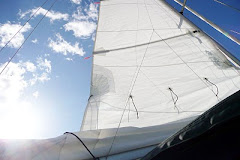

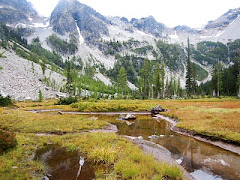


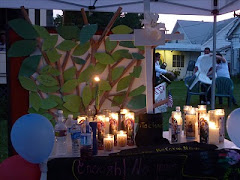






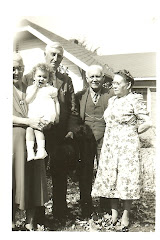
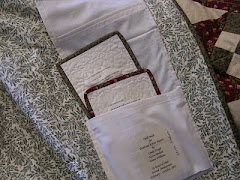









No comments:
Post a Comment